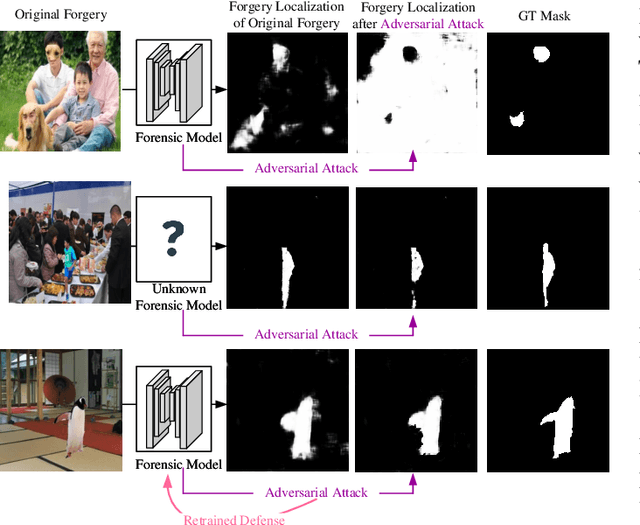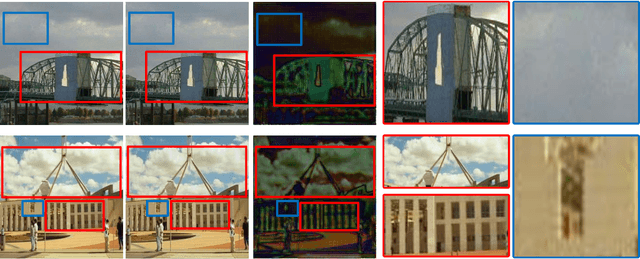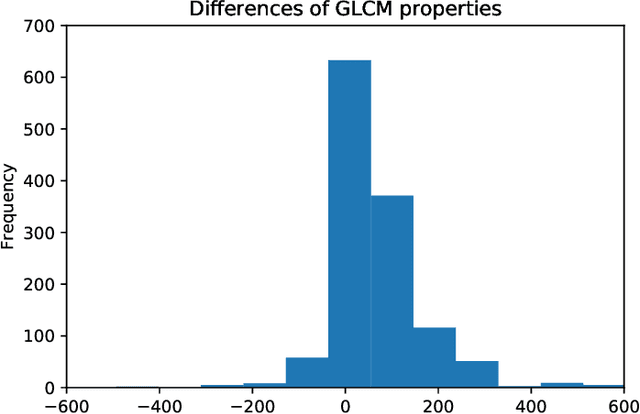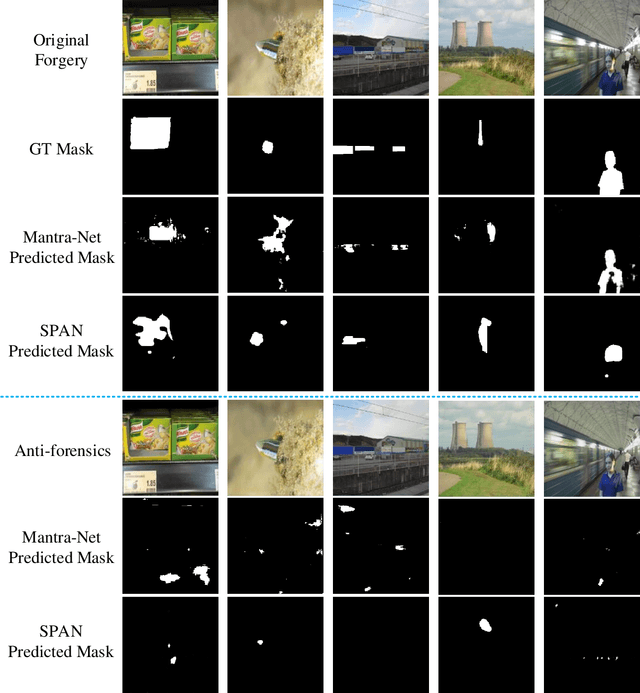Shenghai Luo
Evading Detection Actively: Toward Anti-Forensics against Forgery Localization
Oct 16, 2023



Abstract:Anti-forensics seeks to eliminate or conceal traces of tampering artifacts. Typically, anti-forensic methods are designed to deceive binary detectors and persuade them to misjudge the authenticity of an image. However, to the best of our knowledge, no attempts have been made to deceive forgery detectors at the pixel level and mis-locate forged regions. Traditional adversarial attack methods cannot be directly used against forgery localization due to the following defects: 1) they tend to just naively induce the target forensic models to flip their pixel-level pristine or forged decisions; 2) their anti-forensics performance tends to be severely degraded when faced with the unseen forensic models; 3) they lose validity once the target forensic models are retrained with the anti-forensics images generated by them. To tackle the three defects, we propose SEAR (Self-supErvised Anti-foRensics), a novel self-supervised and adversarial training algorithm that effectively trains deep-learning anti-forensic models against forgery localization. SEAR sets a pretext task to reconstruct perturbation for self-supervised learning. In adversarial training, SEAR employs a forgery localization model as a supervisor to explore tampering features and constructs a deep-learning concealer to erase corresponding traces. We have conducted largescale experiments across diverse datasets. The experimental results demonstrate that, through the combination of self-supervised learning and adversarial learning, SEAR successfully deceives the state-of-the-art forgery localization methods, as well as tackle the three defects regarding traditional adversarial attack methods mentioned above.
DFGC 2021: A DeepFake Game Competition
Jun 02, 2021



Abstract:This paper presents a summary of the DFGC 2021 competition. DeepFake technology is developing fast, and realistic face-swaps are increasingly deceiving and hard to detect. At the same time, DeepFake detection methods are also improving. There is a two-party game between DeepFake creators and detectors. This competition provides a common platform for benchmarking the adversarial game between current state-of-the-art DeepFake creation and detection methods. In this paper, we present the organization, results and top solutions of this competition and also share our insights obtained during this event. We also release the DFGC-21 testing dataset collected from our participants to further benefit the research community.
 Add to Chrome
Add to Chrome Add to Firefox
Add to Firefox Add to Edge
Add to Edge